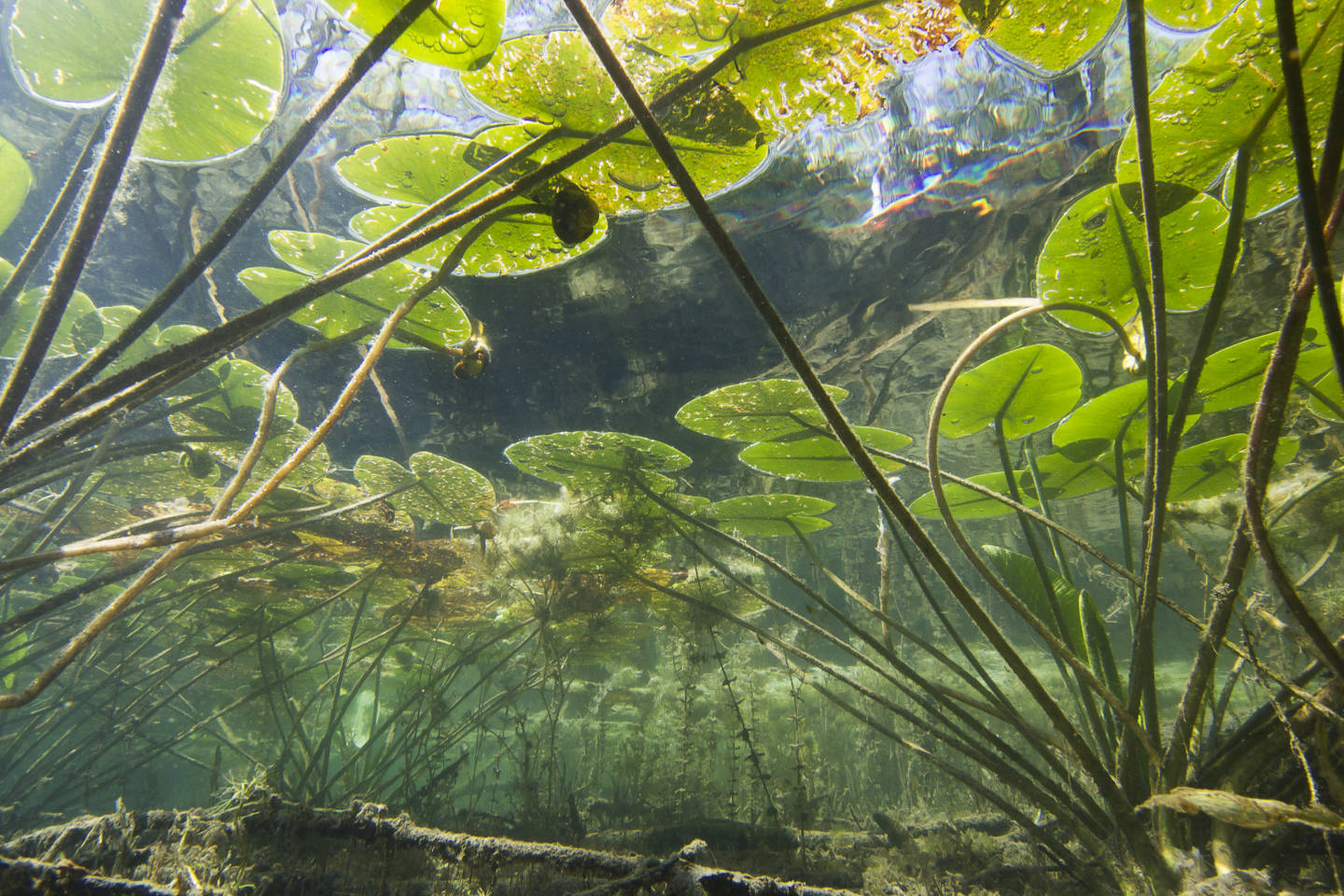
Inland waters
Finland is rich in water bodies, including lakes, rivers, and smaller waters such as ponds, streams, and other aquatic environments. The combined surface area of all inland waters is approximately eight percent of Finland's total land area.
The proportion of species that primarily use freshwater environments as their habitat is estimated to be between seven to eight percent of all known species in Finland. In addition to these species, several others depend on freshwater habitats at some stage in their life cycle.
Finland’s inland waters cover a large surface area but are low in volume
The definition of inland waters is essentially simple: they include all aquatic environments located above sea level. This definition fits Finland’s approximately 57,000 lakes that are at least one hectare in size, over 600 large rivers, more than 30,000 springs, and countless streams. The combined surface area of all inland water environments is about 3.4 million hectares, which accounts for eight percent of Finland’s total land area and ten percent of the land and water area that does not include Finland’s portion of the Baltic Sea. However, considering their extent, Finland’s inland waters are low in water volume, as the average depth of the lakes is only seven meters. Lakes that reach depths of over 80 meters include Päijänne, Lake Inari, Suvasvesi, Saimaa, Toisvesi, and Lammi Pääjärvi.
In Finland, the proportion of inland waters in terms of surface area is highest in Savo, Häme, and North Karelia, home to the largest water bodies such as Saimaa, Päijänne, and Pielinen. There are also many aquatic habitats around Lake Inari in Lapland and near Lake Oulu in Kainuu. In contrast, coastal regions and Upper Lapland outside of Inari have little water surface area. Coastal areas with few lakes have many rivers flowing through them, which are significant for the landscape and biodiversity, although they occupy a small portion of the surface area.
Small-scale inland waters are particularly sensitive to environmental changes, as the shallow water and littoral zone dominate these areas. Therefore, changes in the local environment and watershed have a significant impact on the aquatic ecosystem.
Species inhabiting inland freshwaters
About 1,700 species are known to primarily inhabit inland freshwater environments. This represents from seven to eight percent of the species found in Finland for which a primary habitat has been identified. The proportion of species found in inland waters thus aligns well with the percentage of Finland’s surface area they cover. Most species in inland waters are found in lakes and ponds, but various flowing waters and small bodies of water are also rich in species.
Inland waters are vital habitats for fish and many insects, such as dragonflies and caddisflies. Additionally, many mollusks, birds, mosses, and vascular plants are species of inland waters. Besides, several species primarily found in other habitats depend on inland water environments at some stage of their life cycle or use them secondarily. Due to the low salinity of the Baltic Sea, the species composition of inland waters and the Baltic Sea in Finland largely overlap.